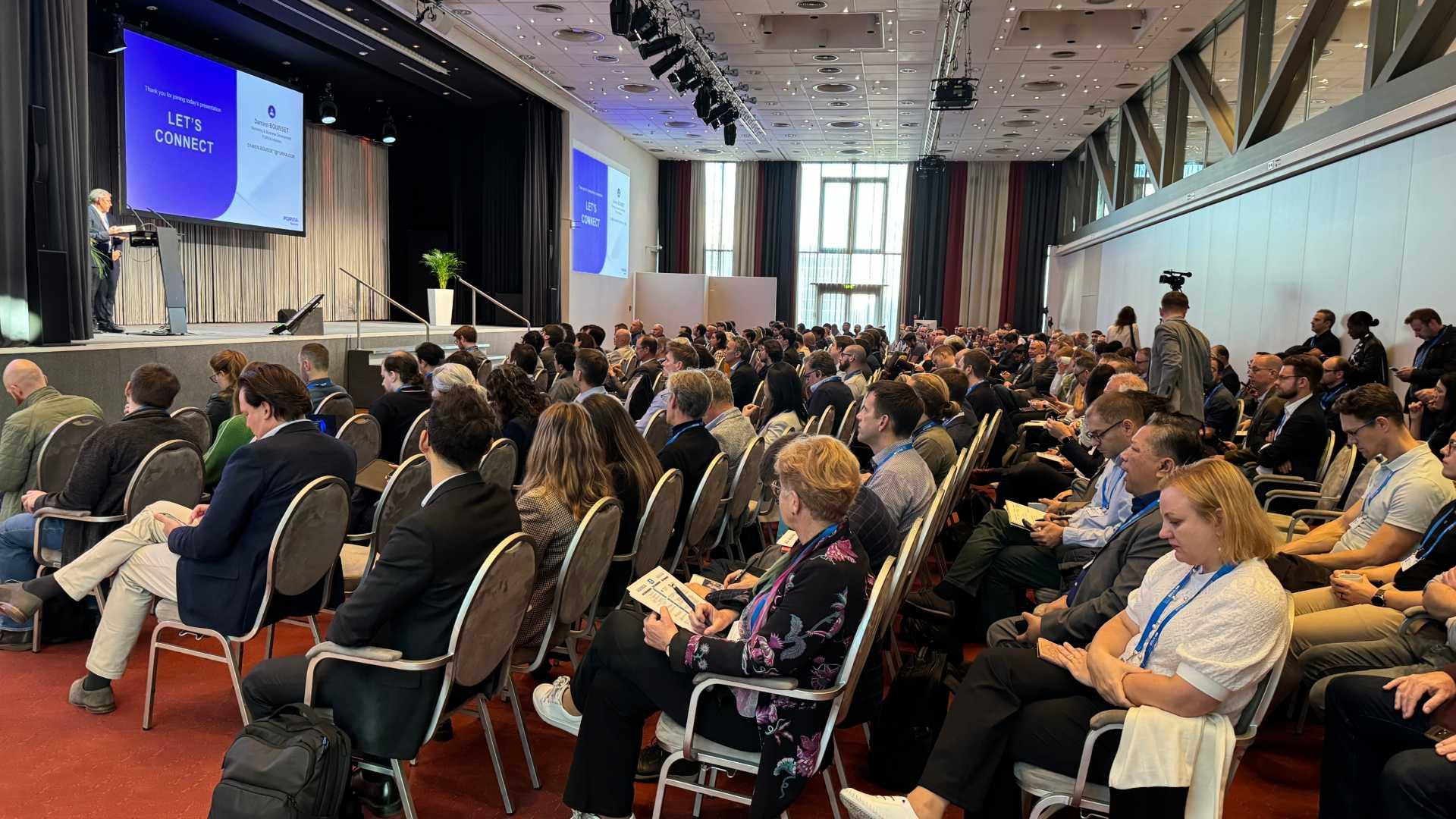TechBlick’s flagship event in Berlin has recorded a successful first day with a high visitor turnout and satisfied exhibitors. “This is where the latest updates are unveiled, where all the key conversations take place and where new ideas and projects are forged,” stated Dr Khasha Ghaffarzadeh, CEO of TechBlick.
In this article, we provide you with a short overview of the topics of today’s keynote sessions.
Forvia: Strategy for interiors using printed electronics
According to Damien Bouisset from automotive company Forvia, “Printed Electronics & In-Mould Electronics are two technologies with strong potential benefits for the automotive industry.” Forvia and its Interior Business Group are investigating how to use this technology for different use cases, functionalising standard interior plastic based components and bringing more value to their customers.
Interior Lighting is a fast-growing segment, and new technologies such as Printed Electronics and IME enable the embedding of lighting elements. However, there are still technical challenges to overcome before those technologies can become a standard and replace existing solutions.
NextFlex: Hybrid Electronics Innovations and Ecosystem: A US perspective
Scott Miller from NextFlex underlined that “Hybrid electronics are at an inflexion point, with products currently on the market that rely on this manufacturing paradigm, many products in late-stage development, and even more opportunities poised to take off.” Applications in medical, aerospace, and consumer electronics, structurally integrated systems, and advanced packaging are all rapidly moving forward. As the US Manufacturing Innovation Institute focused on Hybrid Electronics, NextFlex convenes a broad ecosystem of companies, universities, and government partners to advance technology, create and mature domestic manufacturing capabilities, and support the education and training of the workforce for this manufacturing sector. Miller described the institute’s approach to carrying out its mission, provided examples of technical projects, and offered perspectives on exciting new opportunities for the ecosystem.
Airforce Research Laboratory: Liquid Metal Inks for Stretchable Electronics
According to Christopher Tabor, “Liquid metal technologies are progressing at an increasing rate, opening up new capabilities, applications, and functionality at smaller dimensions. Most composite and thin film printed conductors must be geometrically engineered to tolerate excessive strain and remain conductive; however, liquid conductors take the volume of their encapsulation.”
Gallium specifically is of interest here as it forms its own insulating casing that allows it to be patterned at fine features and to generate stable colloidal suspensions used as inks for printing. Additionally, liquid gallium alloys are ideal for many of the extreme environments in which flexible hybrid electronics are being asked to operate, including extreme mechanical loads as well as extreme cold and space conditions.
Tabor discussed the work done at the Air Force Research Laboratory within his group to understand the fundamental nature of gallium alloys used for stretchable electronics and how we have designed them to be used as a drop-in replacement for more traditional printed electronic inks (e.g. silver, carbon) to be processed using screen printing, blade coating, extrusion, and material jetting techniques.
Yole Group: Advanced Packaging at a Glance: Market Trends, Technology and Challenges
The advanced packaging market is rapidly gaining a larger share of the semiconductor packaging industry, with an expected growth rate of 12.9% CAGR over the next five years. As highlighted by Yole Group’s Gabriela Pereira, “This growth is primarily driven by the rise of generative AI and HPC megatrends. As system requirements for high-performance increase, the semiconductor industry is exploring innovative manufacturing approaches, such as additive manufacturing, to enhance packaging density, thermal management, and cost-effectiveness.” Hes presentation provided an overview of the advanced packaging market and technology trends, highlighting new additive manufacturing techniques in the advanced packaging sector.


